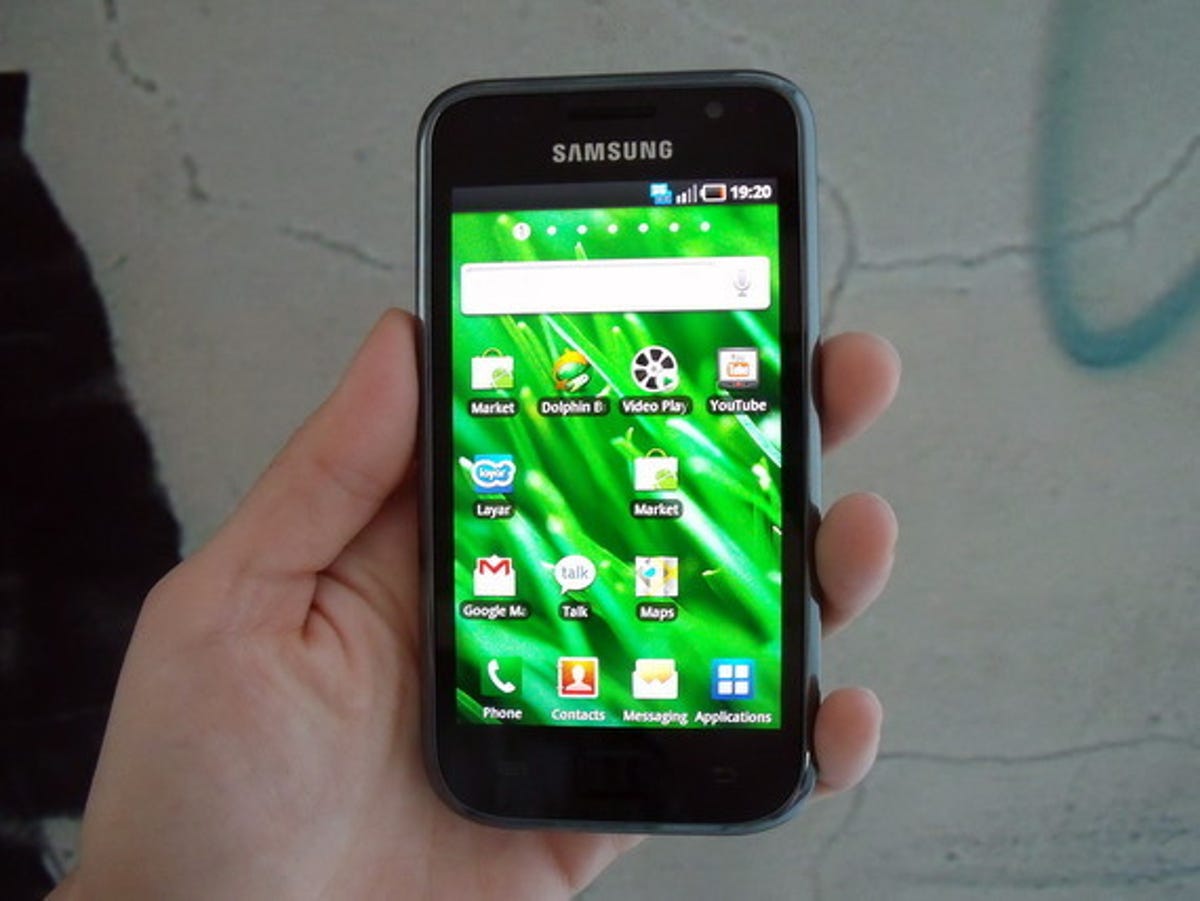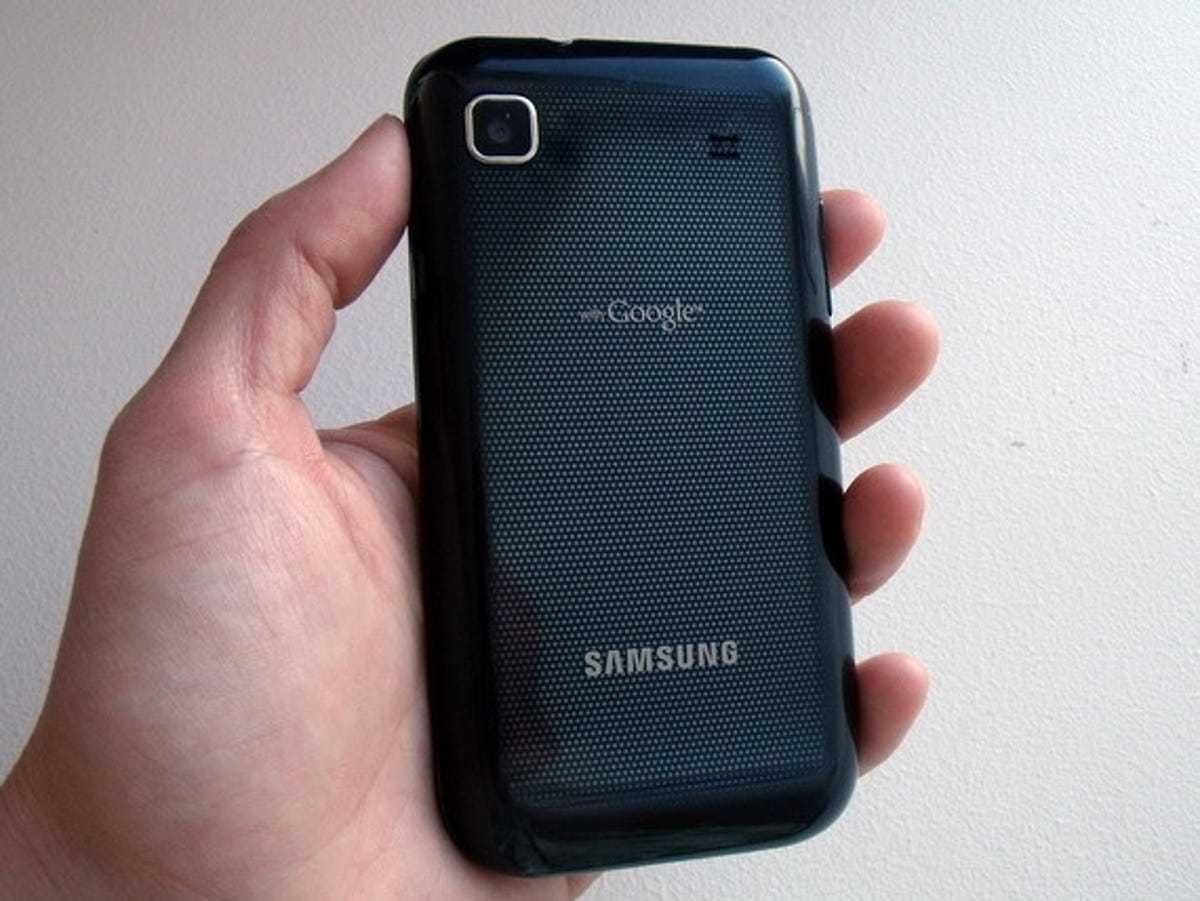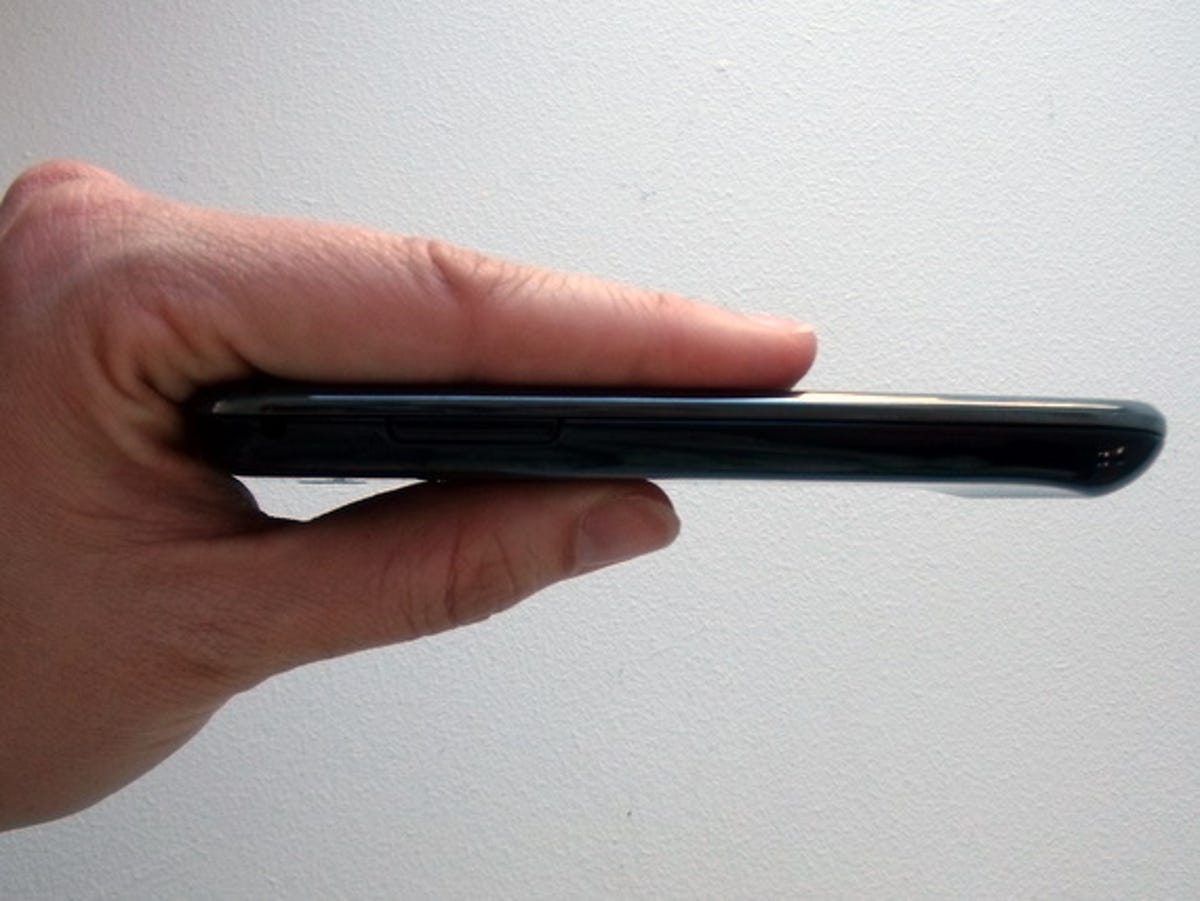
Updated: Our full Samsung Galaxy S review is now live on the site. The original story is below.
We braved a bevy of random British slebs at the launch of the Samsung Galaxy S to get our hands on the huge new Android smart phone.
The biggest surprise was the phone’s size — despite a giant 102mm (4-inch) screen, the phone was surprisingly thin and light. The buttons on the front have been toned down to two, touch-sensitive flat buttons and a single mechanical home screen button, lending the whole phone a sleek and pared-down look that we think would impress even the most jaded smart phone aficionado.
With a 1GHz processor on board, the user interface was smooth as silk, although we’ll have to take it to the limit with lots of running apps before we can make our final judgement. The speed, combined with such a big screen, made tapping a pleasure.
We also liked that the on-screen keyboard supports Swype, which we’ve also seen on the Motorola Quench. It aims to make typing easier by letting you run your thumb over the letters in one continuous movement, rather than pecking out individual keys. In our tests, it’s speedy indeed, although this could be a personal preference.


The Galaxy S is running version 2.1 of Android, and thankfully this powerful smart phone operating system hasn’t been messed with, as we’re not huge fans of Samsung’s own TouchWIZ user interface. There are a bundle of apps pre-installed on the phone, including favourites like Layar, and you can download plenty more from the Android App Market.
In addition, Samsung has its own app store, with a mix of apps for various operating systems, including apps for phones that don’t run Android, like the Samsung Wave. But on the phone we tested, the store didn’t have many apps for Android. The Samsung store could become a good place to check out an edited list of apps if you don’t feel like churning through the chum that sometimes chokes the official store, but for now we suggest you stick with the main market.


Samsung does include a bunch of widgets that it’s developed specially for the Galaxy S, including one that brings together your daily grind of appointments, photos, notes and weather. We’ll give these a proper going-over in our full review, but you don’t have to use any of them if you don’t want to, and we doubt they’ll be deal-breakers for anyone looking to buy a new phone.


The Galaxy S’s huge screen is the Super AMOLED kind, which Samsung says is clearer, brighter and less reflective than the AMOLED type, which it manufacters and shares with other phone makers. We put turned the brightness up to the max on the Galaxy S and our AMOLED-sporting Google Nexus One, which we struggle to see in bright sunlight. In the rarefied photons reflected off of Alexandra Burke’s lip gloss, the difference was noticeable.


The Galaxy S has a 5-megapixel camera on the back, and no photo light or flash. Although we haven’t had a chance to put it through its paces yet, the thin phone case doesn’t leave much room between the lens and sensor, so we don’t expect it to take spectacular shots.


For such a big phone, it feels shockingly thin, at 9.9mm thick. It could probably fit into a pocket easily — we just hope it doesn’t snap like an After Eight mint when you sit down.



